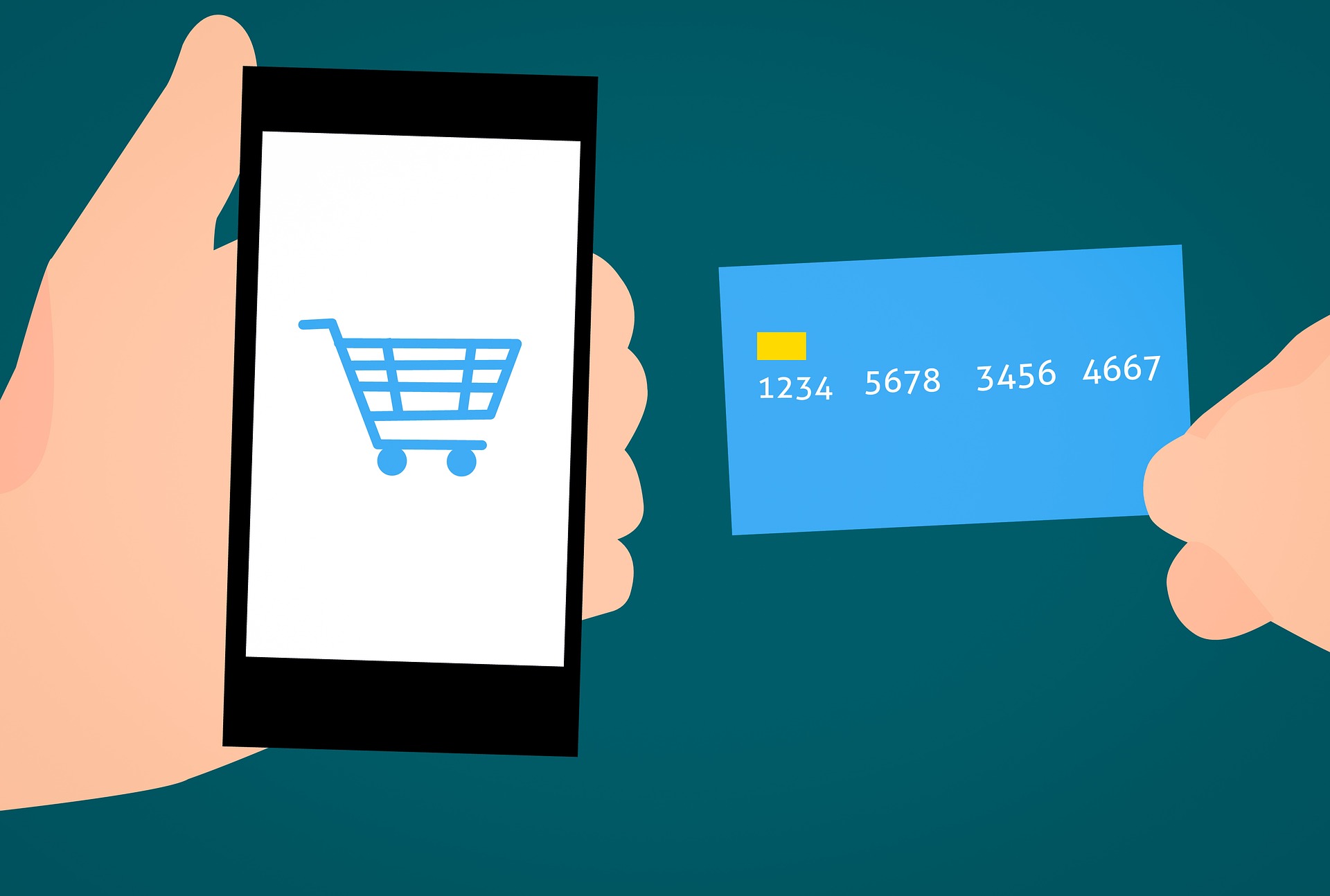E-commerce is drastically changing the way we do business and has many risks associated with it. The regulation and the consumer protection mechanisms associated with e-commerce and electronic transactions are unpacked here.
On 1 July 1997 President Bill Clinton of the United States made the following remarks on e-commerce:
“The invention of the steam engine two centuries ago and the subsequent harnessing of electricity for communications ushered in an industrial revolution that fundamentally altered the way we work, brought the world's people closer together in time and space, changed the way we organize our economies, and brought us greater prosperity.
Today, we are on the verge of another revolution. Inventions like the integrated circuit, the computer, fiber optic cable, and the Internet are changing the way we work, learn, and communicate with each other.
As the Internet empowers citizens and democratizes societies, it is also changing the way business is conducted ... consumers have greater choice and can shop in their homes for a wide variety of products from manufacturers and retailers all over the world. They are able to view these products on their computers or televisions, access information about the products, and order and pay for their choices, all from their living rooms.
According to several estimates, commerce on the Internet will total tens of billions of dollars by the turn of the century and could expand rapidly after that, helping fuel economic growth well into the 21st century.
For this potential to be realized, governments must adopt a market-oriented approach to electronic commerce, one that facilitates the emergence of a global, transparent, and predictable environment to support business and commerce.
Government officials must respect the unique nature of the medium and recognize that widespread competition and increased consumer choice should be the defining features of the new digital marketplace.
Take home
Some businesses have developed applications to enhance the consumer experience, some are using advanced digital marketing technology, others have started trading completely online and some businesses have developed and benefit from an entirely electronic supply chain.
Full article
Keys about e-commerce and consumer protection
Many businesses and consumers are still wary of conducting extensive business over the Internet because of the lack of a predictable legal environment governing transactions. This is particularly true for international commercial activity where concerns about enforcement of contracts, liability, intellectual property protection, privacy, security, and other matters have caused businesses and consumers to be cautious. [1]
Twenty-three years later, Clinton’s words have been brought to life with the emergence of the Fourth Industrial Revolution (4IR). Businesses have adapted to the shifting digital economy by using the efficiencies of technology to develop connected enterprises. Some businesses have developed applications to enhance the consumer experience, some are using advanced digital marketing technology, others have started trading completely online and some businesses have developed and benefit from an entirely electronic supply chain. It cannot be disputed that the digital economy and its associated technologies have to a large extent assisted business in achieving certain efficiencies, extended market reach and global trade, increased profits, and improved customer/client satisfaction.
With this in mind, it is also important to be wary of the risks and challenges that face businesses in the evolutionary shift towards the digital economy. Cybersecurity remains an area of deep concern with many businesses having experienced breaches in their systems by parties attempting to retrieve and/or steal confidential, sensitive or proprietary information. Fraud is a threat as people utilise the technology of the digital economy to defraud individuals and businesses for financial gain. These risks often result in businesses spending large amounts of money to ensure that effective cyber security measures are in place to protect the “connected enterprise”.
It is clear that President Clinton’s concerns of 1997 remain concerns today. It remains true that “many businesses and consumers are still wary of conducting extensive business over the Internet because of the lack of a predictable legal environment governing transactions.” This is particularly true for international commercial activity where concerns about enforcement of contracts, liability, intellectual property protection, privacy, security, and other matters have caused businesses and consumers to be cautious. [2].
Due to the significant shift in our economy towards e-commerce, this article will focus on the regulation and the consumer protection mechanisms associated with e-commerce and electronic transactions.

Chapter VII of the Electronic Communications and Transactions Act [3] (ECT) enhances the consumer protection measures contained in our legal system, such as the Consumer Protection Act [4] (CPA) and the common law [5]. It is important to note that the consumer protection provisions of the ECT Act have been left largely intact by the CPA, which was enacted later, and that the ECT Act must be considered in conjunction with the provisions of the CPA [6]. The ECT Act is the principle legislation that covers online trading. The CPA only covers those areas of online trading that are not already captured in the provisions of the ECT Act [7].
Scope of the ECT Act
The ECT Act defines a consumer as “any natural person who enters or intends entering into an electronic transaction with a supplier as the end user of the goods or services offered by that supplier” [8] and defines a transaction as “a transaction of either a commercial or non-commercial nature, and includes the provision of information and e-government services” [9].
Van der Merwe correctly points out that the definition of “consumer” in the ECT Act restricts the following transactions from being afforded the protection of chapter VII:
a) Transactions between legal or artificial persons; and
b) Transactions between a webtrader and a natural person who is not procuring the goods or services as an end-user but for business purposes, such as on selling. [10]
According to Van der Merwe, an “electronic transaction” for the purposes of chapter VII of the ECT Act “includes the exchange of all data messages between the webtrader and the consumer, whether they are of a contractual nature or not. For obvious reasons, the consumer protection measures only become relevant when the consumer is in the process of concluding a contract or has already done so and wants to escape its negative consequences or rely on the rights provided by it.” [11]
Information duties of the supplier/webtrader
Van der Merwe explains that section 43(1) of the ECT Act “prescribes the information a webtrader must supply on its website. The trader’s failure to supply this information gives the consumer a right to cancel the agreement within 14 days of receiving the goods or services. These obligations are aimed at ensuring the consumer is given full information about the identity of the webtrader, the nature of the goods and services, the agreement, and her or his rights in terms of Chapter VII of the ECT Act”. [12]
The supplier/webtrader is obligated in terms of section 43 of the ECT Act to provide the following information on its website:
a) Its full name and legal status.
b) Its physical address and telephone number.
c) Its website address and e-mail address.
d) Membership of any self-regulatory or accreditation bodies to which that supplier belongs or subscribes and the contact details of that body.
e) Any code of conduct to which that supplier subscribes and how that code of conduct may be accessed electronically by the consumer.
f) In the case of a legal person, its registration number, the names of its office bearers and its place of registration.
g) The physical address where the supplier will receive legal service of documents.
h) A sufficient description of the main characteristics of the goods or services offered by the supplier to enable a consumer to make an informed decision on the proposed electronic transaction.
i) The full price of the goods or services, including transport costs, taxes and any other fees or costs.
j) The manner of payment.
k) Any terms of agreement, including any guarantees, that will apply to the transaction and how those terms may be accessed, stored and reproduced electronically by consumers.
l) The time within which the goods will be dispatched or delivered or within which the services will be rendered.
m) The manner and period within which consumers can access and maintain a full record of the transaction.
n) The return, exchange and refund policy of the supplier.
o) Any alternative dispute resolution code to which the supplier subscribes and how the wording of that code may be accessed electronically by the consumer.
p) The security procedures and privacy policy of the supplier in respect of payment, payment information and personal information.
q) Where appropriate, the minimum duration of the agreement in the case of agreements for the supply of products or services to be performed on an ongoing basis or recurrently.
r) The rights of consumers in terms of section 44, where applicable.
If the supplier/webtrader fails to comply with its abovementioned informational duties the consumer becomes entitled to terminate the agreement within 14 days of receiving the goods or services [13].
Transactional Duties
Transaction Summary
During the course of concluding an electronic transaction, section 43(2) of the ECT Act provides that the supplier must provide a consumer with an opportunity to review the entire electronic transaction; to correct any mistakes; and to withdraw from the transaction, before finally placing any order. Failure to comply with this provision has negative consequences in terms of section 43(3) and section 20 of the Act [14].
In terms of section 43(3) of the ECT Act, the consumer “may cancel the transaction within 14 days of receiving the goods or services under the transaction”.
In terms of section 20 of the ECT Act “the agreement may be cancelled with retrospective effect by the consumer if the webtrader fails to give the consumer the opportunity to prevent or correct a mistake at the time of the consumer’s interaction with the electronic agent” [15].
Payment Procedures
Section 43(5) of the ECT Act provides that “the supplier must utilise a payment system that is sufficiently secure with reference to accepted technological standards at the time of the transaction and the type of transaction concerned”. According to Van der Merwe, “the security of the payment system relates not only to the transfer of information between the webtrader and consumers, and the webtrader and payment institution, but also to the safe storage of such information after completion of the transaction” [16].
According to Buys [17], the following procedures can be used to ensure compliance with section 43(5):
a) The website can be authenticated by obtaining a digital certificate from a recognised security provider;
b) Using encryption technology that encrypts all data messages between the supplier, the consumer and the payment institution;
c) Requiring the consumer to use a username and password to access the website for each separate transaction;
d) Using a time-out function that logs the consumer out of the webpage after a certain amount of inactivity; and
e) Utilising offline or offsite storage of payment information where possible [18].
Performance
Section 46(1) of the ECT Act provides that “the supplier must execute the order within 30 days after the day on which the supplier received the order, unless the parties have agreed otherwise”. Section 46(2) of the ECT Act provides that “where a supplier has failed to execute the order within 30 days or within the agreed period, the consumer may cancel the agreement with seven days' written notice”. Furthermore section 46(3) provides that “if a supplier is unable to perform in terms of the agreement on the grounds that the goods or services ordered are unavailable, the supplier must immediately notify the consumer of this fact and refund any payments within 30 days after the date of such notification”. According to Van der Merwe, this section allows the supplier to lawfully terminate the transaction where the supplier is incapable of performing due to the fact that the goods/services are unavailable.
Note that “this is a serious inroad into the rights of the consumer and presumably the term ‘unavailable’ should be strictly interpreted – the goods must be objectively unavailable, not merely unavailable to the webtrader” [19].
Cooling-off period
The cooling-off provisions contained in section 44 of the ECT Act provide significant protection to consumers. In this regard, “the cooling off provision of section 44 gives the consumer the opportunity to terminate the agreement lawfully when ‘buyer’s regret’ sets in a reasonably short time after the transaction, or when the consumer has had an opportunity to reflect on the consequences of the transaction or to obtain independent advice" [20].
For purposes of goods, the cooling-off period must be exercised within seven days after the date of the receipt of the goods [21]. For purposes of services, the cooling-off period must be exercised within seven days after the date of the conclusion of the agreement [22].
The only charge that may be levied on the consumer for the cancellation is the direct cost of returning the good [23].
According to Van der Merwe, “the existence of the cooling off period is not well known to consumers even though it must be contained in the online contract. Most consumers do not bother to read the standard terms and conditions – their only interest is in the main features of the transactions” [24].
A number of transactions are excluded from the cooling-off provisions provided for in section 44. The following transactions are excluded [25]:
a) An electronic transaction for financial services, including but not limited to, investment services, insurance and reinsurance operations, banking services and operations relating to dealings in securities.
b) An electronic transaction by way of an auction.
c) An electronic transaction for the supply of foodstuffs, beverages or other goods intended for everyday consumption supplied to the home, residence or workplace of the consumer.
d) An electronic transaction for services which began with the consumer's consent before the end of the seven-day period referred to in section 44(1).
e) An electronic transaction where the price for the supply of goods or services is dependent on fluctuations in the financial markets and which cannot be controlled by the supplier.
f) An electronic transaction where the goods are made to the consumer's specifications, are clearly personalised, by reason of their nature cannot be returned or are likely to deteriorate or expire rapidly.
g) An electronic transaction where audio or video recordings or computer software were unsealed by the consumer.
h) An electronic transaction for the sale of newspapers, periodicals, magazines and books.
i) An electronic transaction for the provision of gaming and lottery services.
j) An electronic transaction for the provision of accommodation, transport, catering or leisure services and where the supplier undertakes, when the transaction is concluded, to provide these services on a specific date or within a specific period [26].
Spam and unsolicited goods
The issue of spam or unsolicited emails have presented various difficulties over the years. Spam messages have evolved from annoying advertising chain mails to some containing objectionable content and in some cases carrying dangerous viruses that pose a threat to the information stored on your information system [27]. Van der Merwe correctly points out that the ECT Act only deals with part of the problem in that it refers only to the un-solicited sending of commercial communications [28]. The ECT Act thus appears not to deal aggressively with spam. It requires that anyone sending un-solicited commercial communications to consumers must give the consumers an option to cancel their ‘subscription’ to such communications. If requested by a consumer to do so, the sender must inform the consumer of the source from which their personal information was obtained. Failure to comply with these provisions constitutes an offence punishable in terms of section 89(1) of the ECT Act [29].

The CPA fills in the following gaps in the ECT Act and provides further protection to consumers concluding electronic transactions:
Section 13 - A supplier must not require, as a condition of offering to supply or supplying any goods or services, or as a condition of entering into an agreement or transaction, that the consumer must buy certain other goods and services.
Section 18(4) - Goods must adequately correspond to the sample and description given to a consumer.
Section 22 read with 24(2) – A supplier must display information on goods and services in plain language and must not knowingly apply a trade description to any goods that is likely to mislead the consumer as to any matter implied or expressed in that trade description; or alter, deface, cover, remove or obscure a trade description or trade mark applied to any goods in a manner calculated to mislead consumers.
Section 49 - Any notice to consumers or provisions of a consumer agreement that purports to:
a) limit in any way the risk or liability of the supplier or any other person;
b) constitute an assumption of risk or liability by the consumer; or
c) impose an obligation on the consumer to indemnify the supplier or any other person for any cause, or be an acknowledgement of any fact by the consumer;
must be drawn to the attention of the consumer.
Section 55 – A consumer has the right to receive goods that:
a) are reasonably suitable for the purposes for which they are generally intended;
b) are of good quality, in good working order and free of any defects;
c) will be useable and durable for a reasonable period of time, having regard to the use to which they would normally be put and to all the surrounding circumstances of their supply; and
d) comply with any applicable standards set under the Standards Act, 1993.
Section 79 – An online supplier must offer goods or services in its official business name.
Conclusion
It is clear that the consumer protection mechanisms contained in the ECT Act and the CPA have gone a long way to addressing many of the concerns surrounding conducting business over the internet due to the initial lack of a predictable legal environment governing electronic transactions/trading.
While many consumers and electronic traders/suppliers are still relatively uninformed of the relevant regulatory environment governing these types of transactions, a stable regulatory framework does in fact exist and that those engaging in these types of transactions must understand their reciprocal rights and obligations. This will allow businesses and consumers to reap the far-reaching advantages of doing business online.
- Extract from Memorandum For The Heads Of Executive Departments And Agencies, The White House, Office of the Press Secretary. https://fas.org/irp/offdocs/pdd-nec-ec.htm.
- Ibid.
- Act 25 of 2002.
- Act 68 of 2008
- DP Van Der Merwe et al Information and Communications Technology Law, 2ed 2017 p198.
- Ibid p198.
- Van Der Merwe p197.
- Section 1.
- Ibid.
- Ibid p199.
- Ibid p200.
- Ibid p200.
- ECT Act s43(3).
- Van Der Merwe p203.
- Ibid p204,
- Ibid p204.
- Buys R Online consumer protection and spam in Buys R and Cronje F (eds) Cyberlaw@SA 2ed (2004).
- Ibid 146 – 147.
- Van Der Merwe p205.
- Ibid.
- S44(1)(a).
- S44(1)(b).
- S44(2).
- Van Der Merwe p205.
- S42
- Van Der Merwe p207.
- Ibid.
- Ibid.
- Ibid.
Comments
Related links
Main menu













